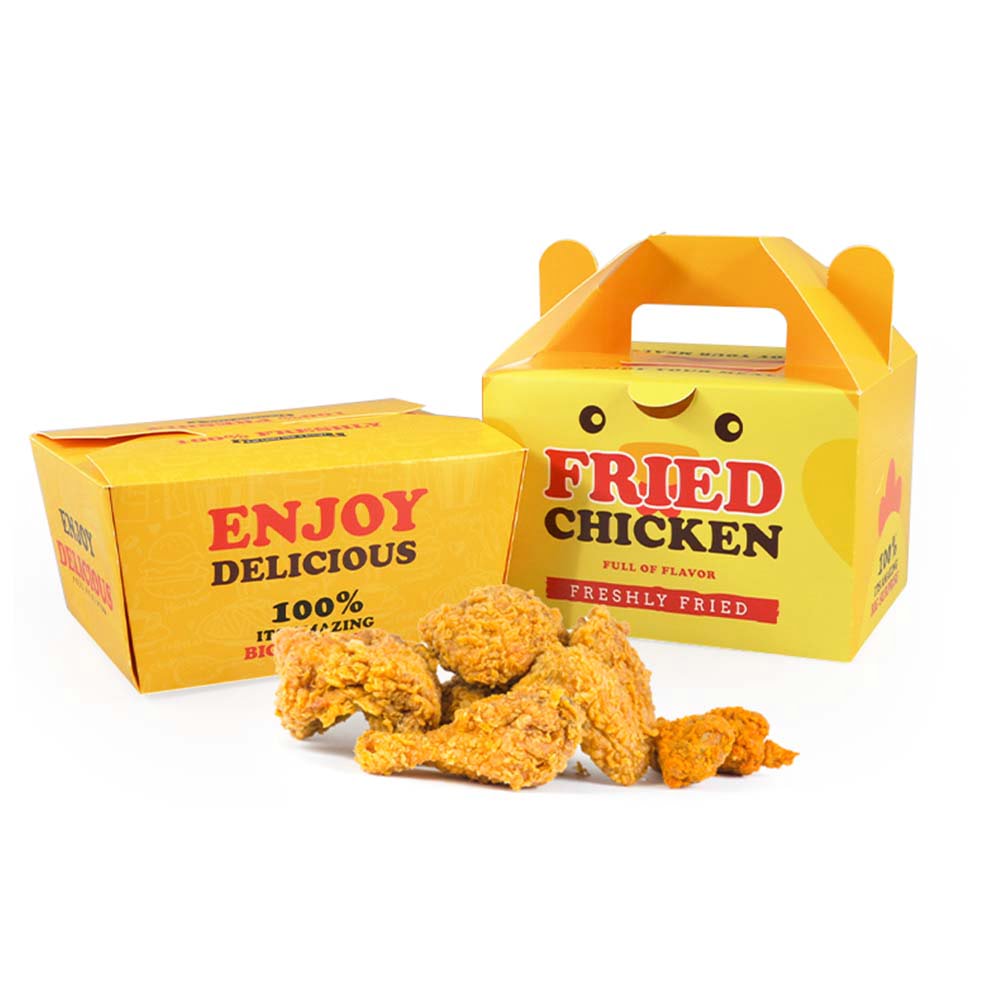Introduction
Fried chicken has been a beloved dish for decades, and one essential element of its serving and delivery is the ubiquitous “fried chicken box.” This article dives into the reasons behind the evolution and significance of this packaging, shedding light on its historical, cultural, and environmental dimensions.
Definition of Fried Chicken Box

The fried chicken box is more than just a container; it’s a vessel that carries a cultural icon. It’s typically a cardboard or paper-based container used to store and transport fried chicken pieces, ensuring their freshness and warmth.
Historical Context
The history of the fried chicken box dates back to the early 20th century. Initially, fried chicken was packed in basic paper wraps or reused boxes, lacking the specialized packaging we see today.
Evolution of Fried Chicken Packaging
Traditional Packaging Methods
Traditionally, fried chicken was often served in wax paper or newspaper, emphasizing convenience over design and functionality. These methods, though practical, lacked the branding and insulation of modern boxes.
Emergence of the Fried Chicken Box
The mid-20th century saw the rise of specialized containers designed explicitly for fried chicken. These boxes aimed to preserve the dish’s heat, maintain its crispiness, and offer a better presentation.
Design Evolution
Over time, these boxes underwent significant design improvements, integrating ventilation, partitioning, and ergonomic handles. The packaging became not just a practical solution but also a canvas for branding and marketing strategies.
The Purpose and Functionality
Practicality in Takeaway Food
The fried chicken box revolutionized the way this dish was served. Its sturdy structure and grease-resistant materials made it ideal for transporting and enjoying the meal on the go.
Branding and Marketing Strategies
Companies realized the branding potential of these boxes, using them as a canvas for logos, slogans, and vibrant designs. The box became a marketing tool, contributing to brand recognition and customer loyalty.
Environmental Impact

Material Choices and Sustainability
However, the widespread use of these boxes raised concerns about their environmental impact. Many are made from non-biodegradable materials, prompting a shift toward more sustainable options like recyclable cardboard.
Recycling and Waste Management
Efforts are underway to make fried chicken packaging more eco-friendly. Companies are exploring recyclable and compostable materials while encouraging responsible disposal to minimize environmental harm.
Cultural Significance
Iconic Associations
The fried chicken box has transcended its utilitarian purpose to become an icon, symbolizing comfort food, family gatherings, and shared experiences.
Social and Cultural Impact
It holds a significant place in popular culture, often depicted in movies, music, and art, representing more than just a food container but a cultural phenomenon.
Conclusion
The evolution of the fried chicken box exemplifies the intersection of practicality, marketing innovation, environmental consciousness, and cultural significance. It remains an integral part of the fried chicken experience while undergoing transformations to align with sustainability goals.
FAQs
- Why is the fried chicken box so popular?
The box offers convenience, preserves the meal’s quality, and serves as a branding platform for companies. - What materials are commonly used for fried chicken boxes?
Cardboard and paper-based materials are prevalent, though there’s a shift toward more sustainable options. - How has the design of fried chicken boxes evolved?
It has evolved to include better insulation, ventilation, and ergonomic features for convenience. - Are fried chicken boxes recyclable?
Some are recyclable, but efforts are ongoing to make them more environmentally friendly. - What cultural significance does the fried chicken box hold?
It symbolizes comfort food, shared experiences, and has become an icon in popular culture.
